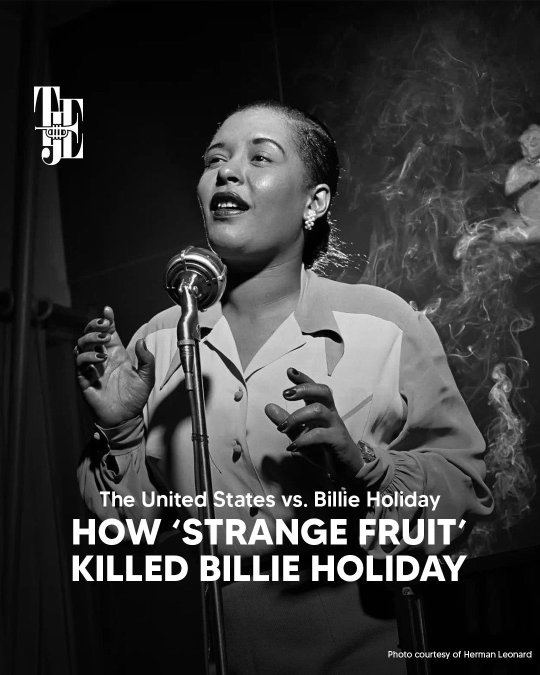Text

2 notes
·
View notes
Text

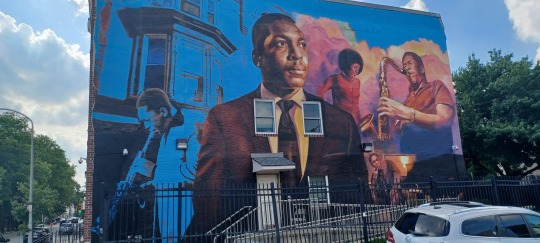


Three Murals of John Coltrane.
The first one is currently Diamond Streets. The second was on the corner of 29th and Diamond Streets. The last was really the first, it was near 33rd and Diamond Streets. Wish we could have kept them all.
5 notes
·
View notes
Text
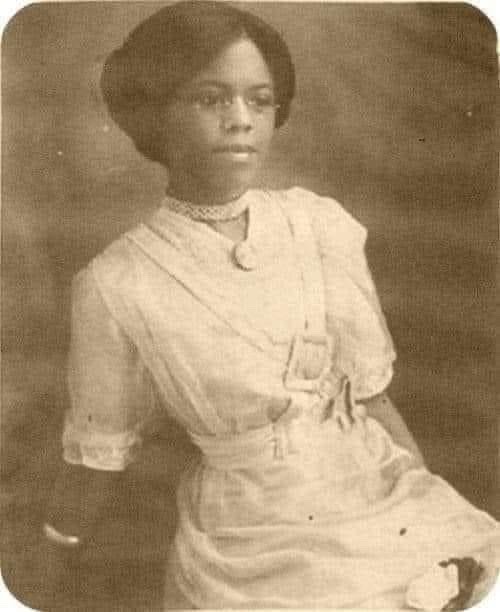
Meet Clara Belle Drisdale Williams [1885-1993], the first African-American graduate of New Mexico State University. Many of her professors would not allow her inside the classroom, she had to take notes from the hallway; she was also not allowed to walk with her class to get her diploma. She married Jasper Williams in 1917; their three sons became physicians. She became a great teacher of black students by day, and by night she taught their parents, former slaves, home economics. In 1961, New Mexico State University named a street on its campus after Williams; in 2005 the building of the English department was renamed Clara Belle Williams Hall. In 1980 Williams was awarded an honorary doctorate of laws degree by NMSU, which also apologized for the treatment she was subjected to as a student. She died at 108 years old.
#Clara Bell Drisdale Williams#black history month#black history#new mexico#New Mexico State University
14 notes
·
View notes
Text

Cathy Williams:
A Woman Who Allegedly Posed as Man to Become a Soldier.
Cathy Williams, born in Independence, Missouri, around 1844, emerged as a remarkable figure in American history. As a daughter of a slave mother and a free father, she initially went by the name Cathay Williams before adopting the alias William Cathay.
Williams holds the distinction of being the first African American woman soldier to enlist in the Army during the 19th century. Her remarkable story also places her as the sole documented black woman to serve in the Army during that period and as a member of the renowned Buffalo Soldiers.....
5 notes
·
View notes
Text
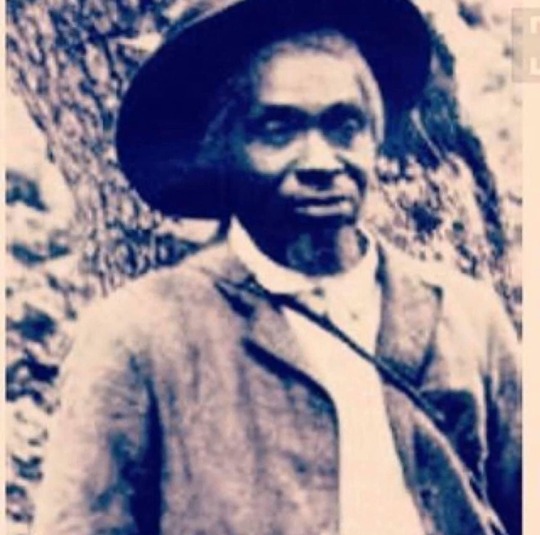
Alexander Ashbourne was born into slavery circa 1820 in Philadelphia, and lived to be 95 years old. He moved to Oakland, California, in the 1880s to run his own grocery store. However, his greatest invention still lives on today.
Alexander Ashbourne is best known for his patents that made coconut oil accessible for domestic use. Mr. Ashbourne received a patent for treating coconut on Aug. 21, 1877. He received patent number 194,287 for his process. The process for refining the oil includes: filtration, bleaching, heated to a very high temperature, and it is hydrogenated to ensure that no unsaturated fatty acids are left in the oil. He also gained a patent for a process for preparing coconut oil on July 27, 1880. He started working on this refining process in 1875, and continued until 1880.
Mr. Ashbourne’s process is still used today and has been built upon by food companies worldwide. Thanks to his work, coconut oil is used in hair products, foods and scented products.
In addition to coconut refining, Mr. Ashbourne patented his biscuit cutter invention on May 11, 1875. Before the biscuit cutter, cooks had to shape biscuits by hand.
#BlackHistoryMonth #BlackCulinary #TBT #BlackGirlsCook #blackhistory
#black history month#black history#black business#black business owner#coconut#coconut oil#Alexander Ashbourne
17 notes
·
View notes
Text
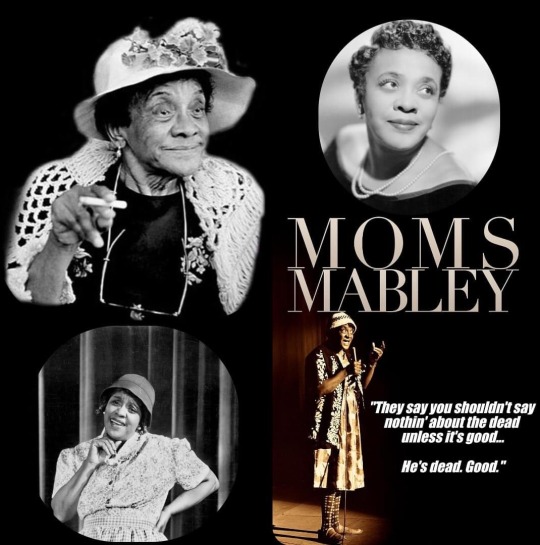
FIRST SUCCESSFUL FEMALE STANDUP COMEDIAN
Loretta Mary Aiken (March 19, 1897 – May 23, 1975), known by her stage name Jackie "Moms" Mabley, was the first successful female standup comedian and had a career that spanned over 50 years. Moms bridged the gap between vaudeville and modern stand up comedy. She was also the first woman comic to be feature at the Apollo theater and Carnegie Hall in 1962.
Moms Mabley was born Loretta Mary Aiken in Brevard, North Carolina, to a large family. She experienced a horrifying, traumatic childhood. Her firefighter father was killed in an explosion when she was 11 and her mother was later hit and killed by a truck on Christmas Day. By the time she was fifteen she had borne two children resulting from sexual assaults: the first by a neighbour when she was twelve, and the second, two years later by a local sheriff. Her stepfather, who had remained her guardian, gave both children up for adoption and then forced Moms to marry a much older man who she despised.
Aiken left home at the age of 14 and pursued a show business career, joining the African-American vaudeville circuit(aka Chitlin' Circuit)as a comedian under the Theatre Owners Booking Association, Fellow performer Jack Mabley became her boyfriend for a short time, and she took on his name, becoming Jackie Mabley, with "Moms" coming from her eventual reputation as a mentoring, mothering spirit.
Moms saw an opportunity to try out her own voice, and discovered that she was a natural at singing, dancing and telling a joke. Especially telling a joke. She realized she had something that many of her contemporaries didn’t - original material. Since her sheltered life had hampered any introduction to current comedy routines, Moms inevitably began to craft authentic pieces based on her own experiences, much of it based on Granny’s pearls of wisdom.
Moms talked to her audience as if they were her children. She delivered superbly solemn routines, original in their time yet amazingly, never bettered. As soon as Moms delivered her opening line “I 'gots' something to tell you...” she immediately captured the attention of everyone in the room - and those rooms were full for over fifty years.
By the early 1920s she had begun to work with the duo Butterbeans & Susie, and eventually became an attraction at the Cotton Club. Mabley entered the world of film and stage as well, working with writer Zora Neale Hurston on the 1931 Broadway show "Fast and Furious: A Colored Revue in 37 Scenes" and taking on a featured role in Paul Robeson's "Emperor Jones" (1933).
Starting in the late 1930s, Mabley became the first woman comedian to be featured at the Apollo, going on to appear on the theater's stage more times than any other performer. She returned to the big screen as well with "The Big Timers" (1945), "Boarding House Blues" (1948), and the musical revue "Killer Diller" (1948), which featured Nat King Cole and Butterfly McQueen.
By the late 1950s Moms Mabley was one of the highest-paid comics in the US, making $10,000 a week. Mabley's standup routines were riotous affairs augmented by the aesthetic she presented as being an older, housedress-clad figure who provided sly commentary on racial bigotry to African-American audiences. Her jokes also pointed towards a lusty zest for younger men.
Mabley began a recording career with her Chess Records debut album "The Funniest Woman Alive," which became gold-certified. Subsequent albums like "Moms Mabley at the Playboy Club," "Moms Mabley at the UN" and "Young Men, Si - Old Men, No" continued to broaden Mabley's reach (she ultimately recorded many albums). She landed spots on some of the top variety shows of the day, including "The Ed Sullivan Show," and graced the stage of Carnegie Hall.
Mabley continued performing in the 1970s. In 1971, she appeared on The Pearl Bailey Show. Later that year, she opened for Ike & Tina Turner at the Greek Theatre and sang a tribute to Louis Armstrong as part of her set.
Mobley had a starring role in the 1974 picture "Amazing Grace," which she was able to complete despite having a heart attack during filming.
Over the course of her life, Mabley had six children: Bonnie, Christine, Charles, and Yvonne Ailey, and two placed for adoption when she was a teenager. She died from heart failure on May 23, 1975, in White Plains, New York.
Actress Clarice Taylor, who portrayed Bill Cosby's mother on "The Cosby Show" and was a major fan of Mabley's work, staged the 1987 play "Moms at the Astor Place Theater, in which she portrayed the trailblazing icon.
Fellow comedian Whoopi Goldberg made her directorial debut with the documentary "Moms Mabley: I Got Somethin' to Tell You, which was presented at the Tribeca Film Festival and aired on HBO in 2013.
#black history month#black history#comdey#comedian#Loretta Mary Aiken#carnegie hall#vaudeville#Jackie Moms Mabley
18 notes
·
View notes
Text

Philadelphia, Pennsylvania
2 notes
·
View notes
Text

This is the view from my hood Fishtown, Philadelphia PA
7 notes
·
View notes
Text
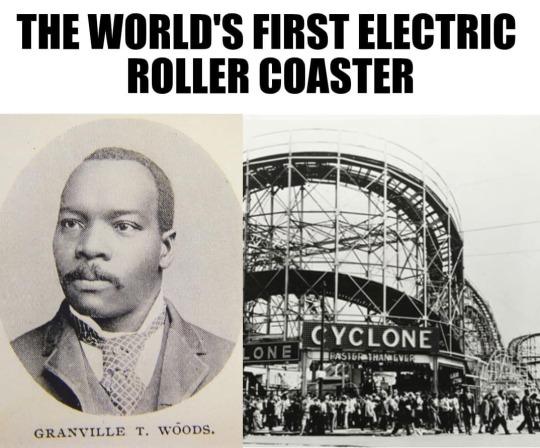
THE WORLD'S FIRST ELECTRIC ROLLER COASTER
Granville T. Woods (April 23, 1856 – January 30, 1910) introduced the “Figure Eight,” the world's first electric roller coaster, in 1892 at Coney Island Amusement Park in New York. Woods patented the invention in 1893, and in 1901, he sold it to General Electric.
Woods was an American inventor who held more than 50 patents in the United States. He was the first African American mechanical and electrical engineer after the Civil War. Self-taught, he concentrated most of his work on trains and streetcars.
In 1884, Woods received his first patent, for a steam boiler furnace, and in 1885, Woods patented an apparatus that was a combination of a telephone and a telegraph. The device, which he called "telegraphony", would allow a telegraph station to send voice and telegraph messages through Morse code over a single wire. He sold the rights to this device to the American Bell Telephone Company.
In 1887, he patented the Synchronous Multiplex Railway Telegraph, which allowed communications between train stations from moving trains by creating a magnetic field around a coiled wire under the train. Woods caught smallpox prior to patenting the technology, and Lucius Phelps patented it in 1884. In 1887, Woods used notes, sketches, and a working model of the invention to secure the patent. The invention was so successful that Woods began the Woods Electric Company in Cincinnati, Ohio, to market and sell his patents. However, the company quickly became devoted to invention creation until it was dissolved in 1893.
Woods often had difficulties in enjoying his success as other inventors made claims to his devices. Thomas Edison later filed a claim to the ownership of this patent, stating that he had first created a similar telegraph and that he was entitled to the patent for the device. Woods was twice successful in defending himself, proving that there were no other devices upon which he could have depended or relied upon to make his device. After Thomas Edison's second defeat, he decided to offer Granville Woods a position with the Edison Company, but Woods declined.
In 1888, Woods manufactured a system of overhead electric conducting lines for railroads modeled after the system pioneered by Charles van Depoele, a famed inventor who had by then installed his electric railway system in thirteen United States cities.
Following the Great Blizzard of 1888, New York City Mayor Hugh J. Grant declared that all wires, many of which powered the above-ground rail system, had to be removed and buried, emphasizing the need for an underground system. Woods's patent built upon previous third rail systems, which were used for light rails, and increased the power for use on underground trains. His system relied on wire brushes to make connections with metallic terminal heads without exposing wires by installing electrical contactor rails. Once the train car had passed over, the wires were no longer live, reducing the risk of injury. It was successfully tested in February 1892 in Coney Island on the Figure Eight Roller Coaster.
In 1896, Woods created a system for controlling electrical lights in theaters, known as the "safety dimmer", which was economical, safe, and efficient, saving 40% of electricity use.
Woods is also sometimes credited with the invention of the air brake for trains in 1904; however, George Westinghouse patented the air brake almost 40 years prior, making Woods's contribution an improvement to the invention.
Woods died of a cerebral hemorrhage at Harlem Hospital in New York City on January 30, 1910, having sold a number of his devices to such companies as Westinghouse, General Electric, and American Engineering. Until 1975, his resting place was an unmarked grave, but historian M.A. Harris helped raise funds, persuading several of the corporations that used Woods's inventions to donate money to purchase a headstone. It was erected at St. Michael's Cemetery in Elmhurst, Queens.
LEGACY
▪Baltimore City Community College established the Granville T. Woods scholarship in memory of the inventor.
▪In 2004, the New York City Transit Authority organized an exhibition on Woods that utilized bus and train depots and an issue of four million MetroCards commemorating the inventor's achievements in pioneering the third rail.
▪In 2006, Woods was inducted into the National Inventors Hall of Fame.
▪In April 2008, the corner of Stillwell and Mermaid Avenues in Coney Island was named Granville T. Woods Way.
471 notes
·
View notes
Text
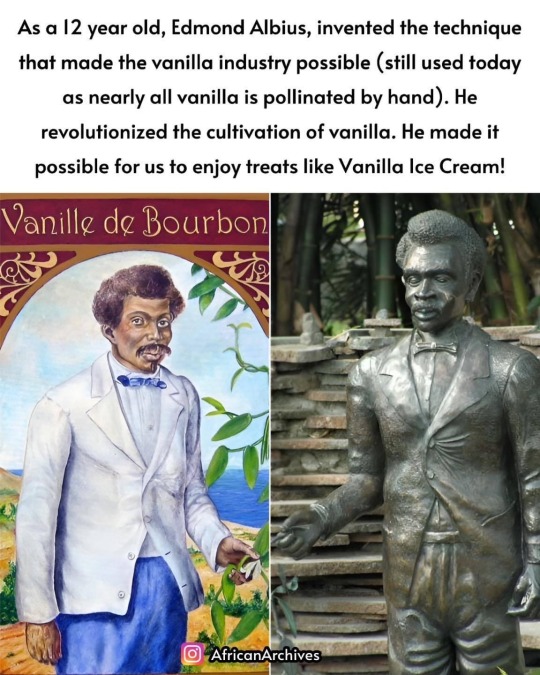
𝗘𝗗𝗠𝗢𝗡𝗗 𝗔𝗟𝗕𝗜𝗨𝗦 (1829-1880)
Edmond Albius was born a slave in 1829, in St. Suzanne, on the island Réunion. His mother died during childbirth, and he never knew his father. In his youth he was sent to work for Botanist Fereol Bellier-Beaumont.
The vanilla plant was flourishing in Mexico, and by the late 18th century, a few plants were sent to Paris, London, Europe and Asia, in hopes of producing the bean in other areas. Although the vine would grow and flower, it would not produce any beans. French colonists brought vanilla beans to Réunion around 1820.
Beaumont had been teaching young Edmond how to tend to the various plants on his estate. He taught him how to hand-pollinate a watermelon plant. Beaumont had previously planted vanilla beans, and had just one vine growing for over twenty years, but was also unable to produce any beans on the vine. Young Edmond began to study the plant and made a discovery. He carefully probed the plant and found the part of the flower that produced the pollen. Edmond then discovered the stigma, the part of the plant that needed to be dusted with the pollen to produce the bean. He used a blade of grass to separate the two flaps and properly fertilized the plant.
Shortly afterwards, while walking through the gardens, Beaumont noticed two packs of vanilla beans flourishing on the vine and was astonished when young Edmond told him that he was responsible for the pollination. Edmond was twelve years old at the time. Beaumont wrote to other plantation owners to tell them his slave Edmond had solved the vanilla bean pollination mystery. He then sent Edmond to other local plantations to teach other slaves how to fertilize the vanilla vine. Within the next twenty to thirty years, Réunion became the world’s largest producer of vanilla beans.
Edmond was rewarded with his freedom, and was given the last name Albius. Beaumont wrote to the governor, asking that Albius be given a cash stipend for his role in the discovery of the fertilization, but received no response. Albius moved to St. Denis and worked as a kitchen servant. He somehow got involved in a jewelry heist and was sentenced to ten years. Beaumont again wrote the governor on his behalf, and the sentence was commuted to five years, and Albius was subsequently released. A man named Jean Michel Claude Richard then set claim to have discovered the fertilization process before Albius. He claimed he visited the island in 1838, and taught a group of horticulturists the technique. Again, Beaumont stepped in and wrote to Réunion’s official historian declaring Albius as the true inventor, giving him all of the credit entirely. The letter survives as part of island history.
Albius returned to live close to Beaumont’s plantation and married. He died on August 9, 1880 at the age of 51 at a hospital in Sainte Suzanne. He never received any profits from his discovery. One hundred years after his death, the mayor of Réunion made amends by erecting a statue of Albius and naming a street and school after him.
#Edmond Albius#vanilla ice cream#vanilla#black history#black history month#vanilla beans#vanilla extract
82 notes
·
View notes
Text
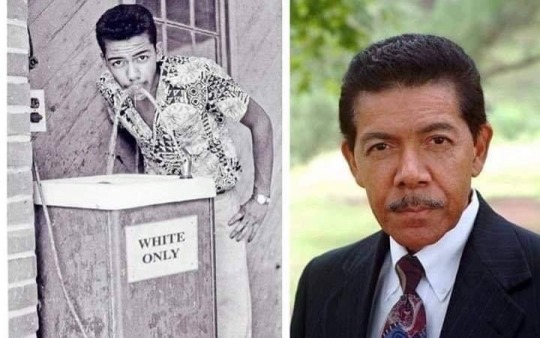
𝗖𝗲𝗰𝗶𝗹 𝗝. 𝗪𝗶𝗹𝗹𝗮𝗺𝘀, "𝗕𝗹𝗮𝗰𝗸 𝗠𝗮𝗻 𝗗𝗿𝗶𝗻𝗸𝗶𝗻𝗴 𝗮𝘁 𝗪𝗵𝗶𝘁𝗲 𝗢𝗻𝗹𝘆 𝗙𝗼𝘂𝗻𝘁𝗮𝗶𝗻," 1964
Cecil J. Williams (born November 26, 1937) is an American photographer, publisher, author and inventor whose photographs document the civil rights movement in South Carolina beginning in the 1950s.
📸 Coming back from a 1956 trip photographing South Carolina’s segregated beaches for Jet magazine, Cecil J. Williams stops at a filling station, closed at the time, and drinks from a “WHITE ONLY” water fountain. Image captured by Rendall Harper, a friend of the photographer.
#ceciljwillams#black history month#black history#white only#civil rights#human rights#history#1950s#1950s history
213 notes
·
View notes
Text

In honour of #BlackHistoryMonth, we wanted to share the story of John Ware, one of many Black individuals who have helped shape Alberta and Canada’s heritage and identity.
Born into slavery on a South Carolina plantation around 1845, he rose to fame on the prairies because of his exceptional horsemanship skills. Ware purchased a ranch near Millarville in 1891 and the next year he married Mildred Lewis. The couple had six children.
As more people moved into the Millarville area, the family relocated along the Red Deer River, north of Brooks Alberta, near what is now Dinosaur Provincial Park.
Read more on his legend and how to visit his cabin this summer: https://bit.ly/42kVCAw
#dinosaur provincial park#brooks Alberta#alberta#canada#John Ware#black history month#black history#1845#circa 1891#circa 1845
135 notes
·
View notes
Text
If I ever get banned know that I stood for human rights and freedom for all. Black lives matter, trans rights are human rights, and from the river to the sea palestine will be free
257 notes
·
View notes
Text

Philadelphia today
0 notes

